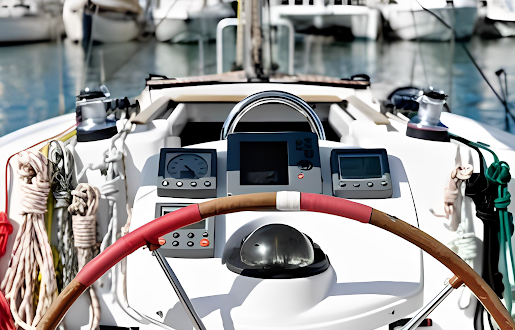Common Problems of Marine Autopilots
My autopilot isn't steering like I think it should. What can I do about this?
Marine autopilots are complex systems with behavior based on inputs from multiple streams of sensor data, ship speed, steering characteristics and much more as well as weather and sea conditions. If the pilot is not directing the course well, there are many possible reasons that should be investigated before assuming error.
In fact, (and I can say this because I didn't design it)
Evolution's current beta software is great and extremely reliable, so if your
device isn't performing well, there's almost certainly a problem with its setup
or incoming data, which we can help find and solve.
Some other FAQs cover common things that can cause routing
problems, but if it's not as simple and clear as this, what can be done to
understand the problem and the cause?
The answer is to collect a logging of the NMEA2000/SeatalkNG
data while using the beta and the problem is obvious.
What should I do before I register SeatalkNG data?
There are a few common things to check first, before you
start trying to record SeatalkNG data (the calibration lock will need to be set
to off in the ship's settings for you to access many of these settings):
1. The Passage
of Time
In autopilot systems that do not have a rudder reference sensor, such as the EV-100 and EV-200, the time-over-calibration option is very important for good steering performance.
This setting is in Menu > Setup > Autopilot Calibration > Engine Settings.
The default value is 10, but this may be an error in the boat's steering. If you change the current value up by a few seconds, how will that change the guidance? If your ship is steering faster or slower than usual, adjusting this tells the pilot this and the pilot can then steer a straighter course.
2. Data Speed
The pilot uses the speed information to figure out how much rudder to apply. What is the current input speed selection in autopilot calibration > vessel settings? In general, the Speed over Ground (SOG) from your chart plotter will give the best result.
3. Ship Type
Sometimes, choosing the type of ship that provides the best steering performance is not the obvious choice in Autopilot Calibration > Ship Settings. I would suggest trying each type of sail or power jig, even if it doesn't seem like the right type for your boat, because one may provide a better "description" of the way your vessel handles than the other types, and thus lead to better steering performance.
4. Software
Version
You should make sure that your Autopilot is running the latest version of the software, because we have made a lot of performance improvements over time. Even if the beta version is new, it may have been in stock for some time and may be running outdated software.
You can update the software through any modern Raymarine Multi-Function Display: https://www.raymarine.eu/service-and-support/software-updates/ or through the Wifi software update function of modern Raymarine MFDs.
5. Calibrate the
Compass
I would suggest doing Autopilot Calibration > Ship
Settings > Restart Compass, to make sure any bad compass calibration data
(for example, when there is something magnetic close to the heading sensor) is
removed and you can start over. You should always do this after you have moved
the heading sensor or changed anything in its environment or surrounding.
If you want to buy a new Raymarine autopilot, you can get it from the CKW Store at lowest prices.
If this does not resolve the issue, you should record
SeatalkNG data while the pilot is in use and send it to Raymarine Support via
Ask Raymarine.
Related Articles to Boating/Fishing:
| Raymarine Autopilot Troubleshooting Tips? |




Comments
Post a Comment